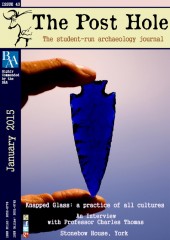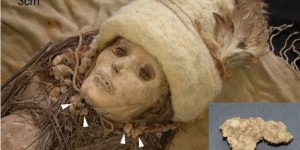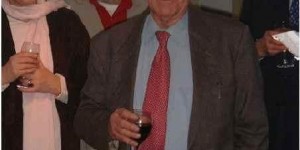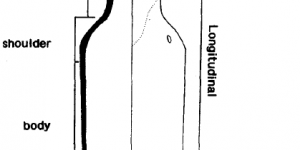In the past several decades, influenced by anthropology, feminism, and phenomenology, personhood and the body have been under scrutiny in archaeology. While it appears inconceivable that an archaeologist could unquestioningly impose their own concepts of the body and the person onto people of the past, doing so still needs to be challenged.
Cartesian dualisms and the nature-culture divide, although recently criticised, persist in archaeological methods. The biological, natural body is considered a constant throughout time and geography, a notion supported by the success of Western science. It is the cultural body that is perceived as fluid. It is undeniable that humans have a shared experience through their bodies: there are limits to the extent by which the physical body may be altered and bodies both in the past and the present operate under certain confines. However, conceptions of the body and the person vary geographically, culturally, and temporally. Within this paper I intend to consider how archaeology has responded to recent interest in conceptions of the body and the person. By focusing on anthropology and ontology, I aim to demonstrate that it is inadvisable to prescribe our current Western understandings onto the past, as it creates myopic and even culturally insensitive understandings. Similarities between concepts may help to understand difference, but they should not be essentialised. There is no universal concept of the body and the person in the present, so it would be inadvisable to consider there to be one mirroring our own in the past.
Traditional archaeology of the twentieth century paid little attention to conceptions of the body and the person (Thomas 2005, 186). Culture historic archaeology reduced factors of identity, such as gender and class, to mere ethnographic variables that could be overlooked (Thomas 2004, 120) and paid little attention to the individual (Fowler 2004, 4). The reactionary movement that followed in Britain and America, namely Processual Archaeology, pursued universal laws of human culture which failed to recognise contextual identities. People were seen to take on set social roles or personae, which were separate from their social interactions (Fowler 2004, 4). From the late 1970s, influenced by feminist and Marxist approaches, there was a reaction against this totalisation (Thomas 2004, 123). Post-processual Archaeology changed the understanding of culture as something that is socially influenced and diverse, but the concept of the person was bounded in Western individualism (Fowler 2004, 5). The diversity of personhood has only been relatively recently explored in social anthropology (Thomas 2004, 123) and archaeological discussion of embodiment only diversified in the 1990s (Joyce 2005, 140). Phenomenology brought bodily experience to the foreground of archaeology (Tilley 2005, 203). Currently, the body presents a battleground for archaeological theories, with the relationship between experience, the individual, the body, and personhood dominating much of the debate (Fowler 2000, 109).
While it is good that concepts of identity are now being considered, using archaeology to decipher concepts of the body and the person in the past has limitations. It rests upon the assumption that there is a direct relationship between material remains and social identity (Casella and Fowler 2004, 1). According to Casella and Fowler, archaeologists should be cautious about imposing a single identity upon discovered remains as identities are temporal and relational (2004, 8). As feminism highlighted in the 1970s, an inadequate study of the past can naturalise present social conditions (Geller 2009, 67). From the 1950s to 1980s, many articles advocated a sexual division of labour during the Palaeolithic that implied a singular view of either sex; enterprising males and passive females (Stoczkowski 2002, 113-114). Although the theories could not be proved in the archaeological data, they served to naturalise contemporary Western gender inequalities. To prevent a similar imposition of modern conditions on the past, archaeologists should be open-minded in their approach to ideas surrounding the body and the person.
Our own history of understanding the body demonstrates historical specificity. During the medieval period, the Western body was understood as a microcosm, but by the 18th century the influence of the scientific revolution and industrialisation led to its comparison to a machine, a functional vessel for the soul (Harris and Robb 2013a, 4). Yet Western science reveals a shared truth. Medicines are seen to work effectively on people who do not understand or believe in them. Bodies all function under certain confines, like the need to eat, sleep, and the irreversible nature of death. Working from this evidence, people often assume that though there are different ways of understanding the body, the actual body remains the same (Harris and Rob 2013b, 15-16). This is the basis of the nature-culture dichotomy, a remnant of the Cartesian dualisms that hinder much of archaeological understanding. Western Cartesian dualisms evolved from the work of Descarte, a seventeenth century French philosopher, who elevated mind over the body. His historically situated ideas maintain a false dichotomy between mind and matter, which, according to Meskell, has serious implications for our interpretations of persons in the archaeological past (2000, 14-15).
The Cartesian nature-culture divide is reflected in archaeological methodology (Harris and Robb 2013b, 16). The body is often studied in two contrasting ways; the science-based osteological approaches that focus on skeletal remains, often seen as fixed, universal, and transhistorical; and the recently developed constructivist approach, which regards the body as fluid and culturally specific. A focus on the creation of identity and experiences removes study from physical reality (Sofaer 2006, 25). In contrast, if the physical body is considered the true body, then Western science is promoted as the only culture to know body truth (Harris and Robb 2013b, 16). In archaeology, the biological body has become synonymous with nature (Sofaer 2006, 51). Western modes of thought hold that there is multiculturalism and mononaturalism (Harris and Robb 2013b, 13). In other words, Western science views many ways of understanding the world but only one reality, often the reality constructed through empirical science. Such concepts leave little room for cultures who understand the body differently to Western science.
Despite the breach between the two modes of studying the body, Sofaer reveals how osteoarchaeology and interpretative archaeology should function symbiotically (2006, 59). Interpretative archaeologists rely on patterns which are hooked onto fixed points, such as age and sex. Therefore, the cultural body is not entirely fluid. The biological body does not conform to ideas of permanence. It is transformable depending on life experiences. Bone modifies depending on various stresses, either through exercise or repeated activities; and changes in the endocrine system can lead to morphological changes in the skeleton (Sofaer 2006, 57). Both cultural and physical bodies change over time, and one cannot separate the physical body from how people understand and live in it (Harris and Robb 2013b, 22). In this respect, the body and the concepts surrounding it cannot be considered transhistorical. The nature-culture divide, complimented by oppositions of stability and fluidity, is overturned. Bodies may have a shared history in their form and constraints, but it is impossible to separate this from their cultural and historical contexts.
Understanding the person is, according to Smith, something that the social sciences are inadequate at doing (2010, 1). Chris Fowler defines the person as “any entity, human or otherwise, which may be conceptualised and treated as a person” (2004, 7). Colloquially, there is little difference between a person and a human being, yet many philosophers would argue that being a person is more than just being a Homo Sapien; personhood is not simply biological (Kadlac 2010, 421-422). Human beings are said to be topped up with an unknown additional factor that cannot be found through empirical observation but through the “knowledge we have of ourselves” (Ingold 2000, 89). Western narratives tell of the body’s civilisation, its rise from its state of nature. These ideas rest on the notion of a fixed natural body that exists prior to culture, and the notion of a person separate from it (Harris and Robb 2013a, 2). Again we return to the nature-culture divide that dominates study of the body. It is problematic because there is no pre-culture body, just as there is not pre-nature culture. The two cannot exist in isolation. Modern Western science’s attitude to the person is therefore paradoxical.
For a long time in archaeology, the person was perceived as a bounded individual, a concept which is still often projected across time (Fowler 2000, 115). In agency theory in particular, individuals were considered an important part of studying political economies and social change (Gillespie 2001, 73). Gillespie acknowledges archaeology’s focus on individual actions, often with society and structure featuring as mere backdrops, as reflective of the Western fascination with the individual (2001, 74-75). Personal bedrooms, ownership of consumer goods and birth and death certificates exemplify how the concept of a bounded individual is constructed within and reinforced by society. But the assumption that the person and body are universally understood as bounded individuals is incorrect, as many ethnographic and anthropological studies have revealed (Fowler 2000, 113-114). Today, social science theories of personhood are centred on dichotomies of holism and the individual (Gillespie 2001, 73). However, Brittain and Harris believe this sliding scale between oppositions to be unhelpful (2010, 585); all societies have aspects of dividual and individual personhood. As Thomas rightly identifies, one cannot be human at all without others (2004, 147). Many aspects of Western identity are relational and dependent on other people. Age, class, and kinship structures are dependent on relationships to make them aspects of identity. One cannot be a parent without a child, a sister or brother without a sibling. The boundaries of individualism can also be seen to be blurred in shared bedrooms between partners, or double grave plots.
In Strathern’s study of Highland New Guinea society, The Gender of the Gift, Melanesian personhood is proven to be different to that of the Western individual (Fowler 2004, 25). Persons are alterable through relationships which are condensed through networks of gift exchange (Strathern 1988, 221). A person is multiply-authored, and contains components from the whole community (Fowler 2004, 26). This is a type of dividual personhood. Yet there is not merely an opposition between dividual and individual personhood, but many different manifestations of these forms. In the late twentieth century, Busby studied the Marianad fishing community of southern India, arguing that dividuals were more permeable than partible (Fowler 2004, 31). Flows of substance, such as food or money, could generate relations and alter the composition of a person. However, unlike in Melanesia, where one part of a person could be replaced with another; permeable personhood never sees a removal of parts, just an alteration in size and ratio (Fowler 2004, 32). In our current time, there is great variation in modes of personhood that extend beyond the opposition of dividual and individual. Western concepts of the person are insufficient in representing these forms in the present, so how could they represent all forms in the past?
Strathern’s study of Melanesian gift exchange and dividuality became incredibly influential in archaeology and the connections made between prehistoric people, objects, and places. In Fragmentation in Archaeology, Chapman drew from detailed evidence from the Balkans, identifying the breakages of pots and figurines in Neolithic Europe as a deliberate strategy that symbolised tokens of relationships. He formed an analogy with Melanesia to better understand dividual modes of personhood, identifying the breakages in Neolithic Europe as forming similar concepts of enchained dividuals (Chapman 2000). Most criticism for Chapman’s work is centred on the query of deliberate breakages in assemblages. However, Brittain and Harris question the link between fragmentation and enchainment, which is often taken for granted by archaeologists. They reveal that in anthropology the fragmentation of objects is not immediately associated with enchainment. Kula objects, for example, that objects grow in size as they acquire biographies, rather than fragmenting (Harris and Robb 2010, 585). While this reveals the problems in assuming similarities between past and present concepts, anthropological works have evidently opened new avenues of interpretation.
In the West, non-humans are steadfastly understood as being different to people, despite the fact that being a person is considered to be something more than being a human (Ingold 2000, 90). The Cartesian dualism of mind opposed to nature places animals in the nature category. Although animals can be seen as possessing characteristics of a person, considering the naming and treatment of pets, it is clear that they are something different. Humanity is seen to have rubbed off on them, and they are locked in a state of perpetual childhood (Ingold 2000, 91). However, not all societies share the concept of a nature culture divide, and being a person is not limited to Homo Sapiens. There are many ethnographic accounts of animistic practices which challenge Western essentialist approaches to concepts of the body and the person (Harris and Robb 2012, 668). In the Ojibwa community, a Native American First Nations group, there is no physical barrier between mind and nature (Ingold 2000, 103). People come in a variety of forms, including animals and meteorological events. The animals that are persons are not mimicking humanity, but people in their own right (Ingold 2000, 91-92). Western concepts of the person does not allow for this form of personhood. For many years, the Ojibwa concept of the person would have been understood as a belief or an untruth (Harris and Robb 2012, 668). However, a respect for alterity demands that the other is allowed to be itself (Thomas 2004, 147) and from the 1990s, a move was made that translated other accounts of the true body as due to ontological difference (Harris and Robb 2012, 668). Western concepts of the body and the person are part of a different ontology. Enforcing our beliefs onto the Ojibwa community undermines their concepts of the person.
Harris and Robb express how accepting ontological differences creates the danger of dichotomising the gap between Western and non-Western modes of thought (2012, 668), and one may question how either category could communicate with each other. By prioritising perspective, the material world is side-lined (Harris and Robb 2012, 676). Everyone, bodies and persons, exist in a shared world (Alberti et al. 2011, 907). The body and the person are multimodal in every society, and multiple perspectives should be acknowledged and engaged with (Harris and Robb 2012, 669, 676). Nonetheless, to a certain extent similarities between understanding the body should be considered to facilitate comprehension between different groups, in both the present and the past. Despite the limitations of Chapman’s work, the development of new approaches to the European Neolithic was prompted by anthropological studies of contemporary personhood in Melanesia. The Jesuit missionaries of the 17th century and Ojibwa tribe, while possessing different ontologies of personhood, had a shared knowledge of the body as a centre for display. As the Ojibwa donned the bear suit, the inner bearness was accessed. The Jesuit’s general attire conveyed and established his social position of authority (Harris and Robb 2012, 673). Similarities should be recognised, but not assumed.
To allocate contemporary Western concepts as a universal, transhistorical understanding of the body and the person is an inherently obtuse reading of the past, blinkered to difference. While there is no denying that people in the present and the past have a degree of shared experience through physical bodies and the material world, concepts of the person and the body manifest themselves in hugely different ways. The acceptance of ontologies is crucial to working towards accepting different body worlds, provided that the accentuation of difference does not hinder comprehension. Interdisciplinary approaches, such as the use of anthropological study, allow archaeologists to comprehend people in the past and in the present. Within the same society there may be different ways of knowing and understanding ourselves, as seen in the contradictions of Western notions of individualism. That being said, this essay has shown how acknowledging similarities may provide new avenues of understanding. To a certain extent therefore, it is necessary to acknowledge parallels within notions of the body and the person. Nevertheless, essentialist views should be avoided. They undermine different cultures and naturalise current social conditions. We cannot possibly assume that our ideas about the body and the person are the same as those of people in the past. However, we can use our concepts, and the concepts of our contemporaries, to provide a better way of comprehending past ideas about the body and the person.
Bibliography
- Brittain, M. and Harris, O. (2010). Enchaining arguments and fragmenting assumptions: reconsidering the fragmentation debate in archaeology. World Archaeology. 42 (4), 581-594.
- Casella, E. and Fowler, C. (2004). ’Beyond Identification: An Introduction’ In Casella, E. and Fowler, C. (Eds). The Archaeology of Plural and Changing Identities: Beyond Identification. New York: Springer.1-10
- Chapman, J. (2000). Fragmentation in Archaeology: People, Places, and Broken Objects in the Prehistory of Southern Europe. London: Routledge.
- Fowler, C. (2000). ‘The Individual, The Subject and Archaeological Interpretations: Reading Luce Irigaray and Judith Butler’. In Holtore, C. and Karlsson, H. (Eds). Philosophy and Archaeological Practice. Gothenburg: Bricoleur Press. 107-134.
- Fowler, C. (2004). The Archaeology of Personhood. London: Routledge.
- Geller, P. (2009). Identity and Difference: Complicating Gender in Archaeology. Annual Review of Archaeology. 38, 65-81.
- Gillespie, S. (2001). Personhood, Agency, and Mortuary Ritual: A Case Study from the Ancient Maya. Journal of Anthropological Archaeology. 20, 73-112.
- Harris, O. and Robb, J. (2012). Multiple ontologies and the problem of the body in history. American Anthropologist. 114 (4), 668-79.
- Harris, O. and Robb, J. (2013a). ‘O Brave New World, That Has Such People in It’. In Robb, J. and Harris, O. (Eds). The Body in History: Europe from the Palaeolithic to the Future. Cambridge: Cambridge University Press. 1-6.
- Harris, O. and Robb, J. (2013b). ‘Body Worlds and Their History: Some Working Concepts’. In Robb, J. and Harris, O. (Eds). The Body in History: Europe from the Palaeolithic to the Future. Cambridge: Cambridge University Press. 7-31.
- Ingold, T. (2000). The Perception of the Environment: Essays on Livelihood, Dwelling, and Skill. London: Routledge.
- Joyce, R. (2005). Archaeology of the Body. Annual Review of Anthropology. 34, 139-58.
- Kadlac, A. (2010). Humanizing Personhood. Ethical Theory and Moral Practice. 13 (4), 421-437.
- Meskell, L. (2000). ‘Writing the Body in Archaeology’ In Rautman, A. (Ed). Reading the Body: Representations and Remains in the Archaeological Record. Pennsylvania: University of Pennsylvania Press. 13-24.
- Smith, C. (2010). What Is A Person? Rethinking Humanity, Social Life, and the Moral Good From the Person Up. Chicago: University of Chicago Press.
- Sofaer, J. (2006). The Body as Material Culture: a Theoretical Osteoarchaeology. Cambridge: University Press.
- Stoczkowski, W. (2002). Explaining Human Origins: Myth, Imagination, and Conjecture. New York: Cambridge University Press.
- Strathern, M. (1988). The Gender of the Gift: Problems with Women and Problems with Society in Melanesia. London: University of California Press.
- Thomas, J. (2004). Archaeology and Modernity. London: Routledge.
- Thomas, J. (2005). ‘Notions of the Person’. In Renfrew, C. and Bahn, P. (Eds). Archaeology, the Key Concepts. London: Routledge. 186-191.
- Tilley, C. (2005). ‘Phenomenological Archaeology’. In Renfrew, C. and Bahn, P. (Eds). Archaeology, the Key Concepts. London: Routledge. 201-207.








